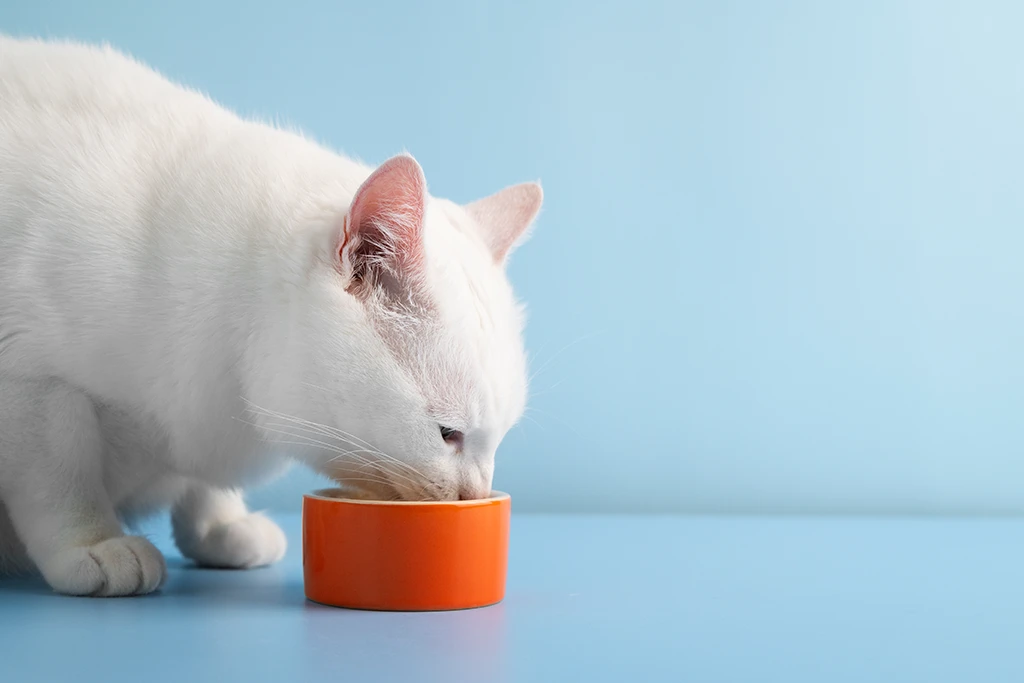

As our feline friends gracefully embrace their golden years, they encounter hurdles like stiff joints and decreased mobility. Witnessing their playful spirit fade due to discomfort tug at our heartstrings. But don’t get disheartened! A natural supplement is found in the form of CBD. This remarkable compound is gaining recognition for its potential to support joint health and enhance the quality of life for our cherished senior cats.
“CBD and THC analgesic treatment significantly reduced chronic osteoarthritic pain in a cat, but may increase ALT levels,” according to the 2023 study by Gutierre, E., Crosignani, N., García-Carnelli, C., Mateo, A., & Recchi, L., titled “A case report of CBD and THC as analgesic therapy in a cat with chronic osteoarthritic pain.”
The potential power of CBD goes far beyond just joint health. We’ll uncover its potential benefits, address common concerns, and explore how this natural remedy helps a cherished companion age gracefully and maintain an active, fulfilling lifestyle. Let’s begin with how aging affects a cat’s mobility.
Table of Contents
ToggleCats experience changes as they grow older. Joints become less flexible, muscles lose strength, and conditions like arthritis and inflammation become more prevalent. These changes lead to reduced mobility, making it difficult for cats to jump, climb, or even groom themselves comfortably.
“Healthy aging in cats involves common health-related changes, but identifying appropriate clinical methods for evaluating their health is crucial for optimal care and preventing health issues,” according to the 2016 study by Bellows, J., Center, S., Daristotle, L., Estrada, A., Flickinger, E., Horwitz, D., Lascelles, B., Lepine, A., Perea, S., Scherk, M., & Shoveller, A., titled “Aging in cats.”
Common signs of mobility issues in senior cats include:
If you notice any of these signs, it’s time to consult the cat’s veterinarian and explore ways to support a cat’s joint health. “Cats with early owner-reported signs of impaired mobility show lower scores in pain, crepitus, and thickening, and a compromised quality of life compared to healthy cats,” according to the 2023 study by Maniaki, E., Murrell, J., Langley‐Hobbs, S., & Blackwell, E., titled “Do owner-reported changes in mobility reflect measures of activity, pain and degenerative joint disease in cats?.”
CBD, short for cannabidiol, is a non-psychoactive compound derived from the hemp plant. It interacts with a cat’s endocannabinoid system (ECS), a complex network that helps regulate various bodily functions, including pain perception, inflammation, and immune response.
Research suggests that CBD helps reduce inflammation and discomfort in joints, potentially improving mobility and quality of life for senior cats. While more studies are needed specifically on cats, existing evidence points to CBD’s potential as a natural aid for joint health.

As felines age, they start to show signs of slowing down. Aches and pains become more frequent, and those playful pounces turn into gentle strolls. But don’t worry, there’s potential help on the horizon! CBD, with its natural properties, offers a range of benefits for senior cats, helping them rediscover their youthful zest. “Cannabis, specifically CBD, has shown to produce pharmacological effects on joint pain through inhibition of pain pathway signaling and anti-inflammatory effects on cannabinoid receptor type 1 (CB1) and CB2,” (Miller, R., & Miller, R., 2017).
For senior cats struggling with joint issues like arthritis, CBD offers a gentle paw of relief. Studies suggest it helps manage chronic pain and inflammation, making those once-achy movements a bit more comfortable. Imagine a cat stretching with ease, enjoying those sunny windowsill naps without a hint of discomfort.
CBD encourages a senior cat to stay active and engaged by easing pain and inflammation. It’s like a little boost of motivation, helping them rediscover the joy of playtime and exploration. A more mobile cat is often a happier cat, and CBD is a ticket to keeping those paws moving.
Beyond physical comfort, CBD’s potential calming effects also improve mood and sleep. Picture a senior cat feeling more relaxed and content, napping peacefully in their favorite spot. A good night’s sleep and a positive outlook make a world of difference in a senior cat’s overall quality of life.
Remember, every cat is unique, and their response to CBD varies. It’s always best to consult the pet’s veterinarian before starting any new supplement, especially for senior cats with other health concerns. But with careful consideration and guidance, CBD is a valuable tool in helping a senior cat live their golden years to the fullest.
When selecting CBD products for a senior cat, quality and safety are paramount. Look for:
When starting a senior cat on CBD, it’s essential to “start low and go slow.” Here are some general dosage recommendations:

Giving a cat CBD doesn’t have to be a wrestling match. With a little finesse and the right approach, paw-rents seamlessly incorporate it into their daily routine. Let’s explore the different forms of CBD and how to administer them like a pro:
CBD oils and tinctures offer flexibility and precise dosing. Administer them directly into a cat’s mouth, preferably on the gums, using the dropper provided, or mix them into their favorite food. If a cat is a bit finicky, try adding the oil to a small amount of wet food or a tasty treat.
CBD-infused treats are a popular choice for picky eaters. They make administering CBD a breeze, turning it into a delightful experience for a feline friend. Just make sure to choose treats with high-quality ingredients and appropriate CBD dosages for a cat’s size.
Capsules offer a pre-measured dose of CBD, making them a convenient option for pet parents who want accuracy. However, getting a cat to swallow a pill is a bit tricky. Pet owners need to try hiding it in a treat or using a pill popper. If a cat is particularly resistant, consult the cat’s veterinarian for alternative administration methods.
Regardless of the chosen form, consistency is crucial for reaping the full benefits of CBD. Aim to administer it at the same time each day, creating a routine that a cat easily adjust to. Remember, patience is a virtue. It takes some time for a cat to get used to the new addition to their routine, so be gentle and persistent.
With a little understanding and the right approach, pet owners make administering CBD a stress-free and even enjoyable experience for both paw-rents and pets.
While CBD is a fantastic addition to a senior cat’s wellness routine, it truly shines when combined with other supportive measures. It’s like a symphony of care, with each element playing its part to create a harmonious melody of comfort and well-being.
Even though a cat prefer naps over zoomies these days, gentle exercise is still key. Encourage them to stay active with short walks, playful feather toys, or even play tunnels. Movement helps keep joints lubricated and muscles strong, promoting overall mobility and vitality.
Cats need the right fuel to thrive. A balanced diet rich in anti-inflammatory nutrients works wonders for joint health. Consider incorporating foods like salmon, blueberries, and turmeric into their meals, or talk to the cat’s vet about specialized senior cat food or supplements. “Optimal nutrition for older cats requires a thorough nutritional assessment, considering medical conditions and nutrient levels among senior cat diets,” (Hutchinson, D., & Freeman, L, 2011).
Carrying extra weight puts additional stress on already-aging joints. Help a cat maintain a healthy weight through portion control and gentle exercise. This significantly reduces discomfort and improves their overall quality of life.
As cats age, their mobility becomes limited. Make their environment more accessible with ramps, raised food and water bowls, and soft bedding in easily accessible areas. These small changes make a big difference in their comfort and independence.
Regular checkups with a pet’s attending veterinarian are crucial for monitoring a cat’s joint health and adjusting their treatment plan as needed. It’s also an opportunity to discuss any concerns and explore additional therapies or medications that complement CBD.
Remember, a holistic approach is key to supporting a senior cat’s joint health and overall well-being. By combining CBD with these supportive measures, paw-rents create a loving and comfortable environment where cats thrive in their golden years.
As cats enter their golden years, CBD is a valuable addition to their wellness routine, supporting joint health, mobility, and overall quality of life. By working closely with the cat’s veterinarian and choosing high-quality products, paw-rents help their cherished companion age gracefully and enjoy many more happy, active years by their side.
“A holistic approach, including veterinary input, visual observation, clinical and orthopaedic examination, and diagnostic imaging, is vital for maintaining the health and welfare of senior cats with musculoskeletal impairment,” (Dowgray, N., & Comerford, E., 2020).
Remember, every cat is unique, and their journey with CBD will be too. Embrace the process, observe the cat’s response, and adjust as needed. With patience and love, paw-rents help their senior cats thrive and savor every precious moment.
References

Table of Contents
Toggle